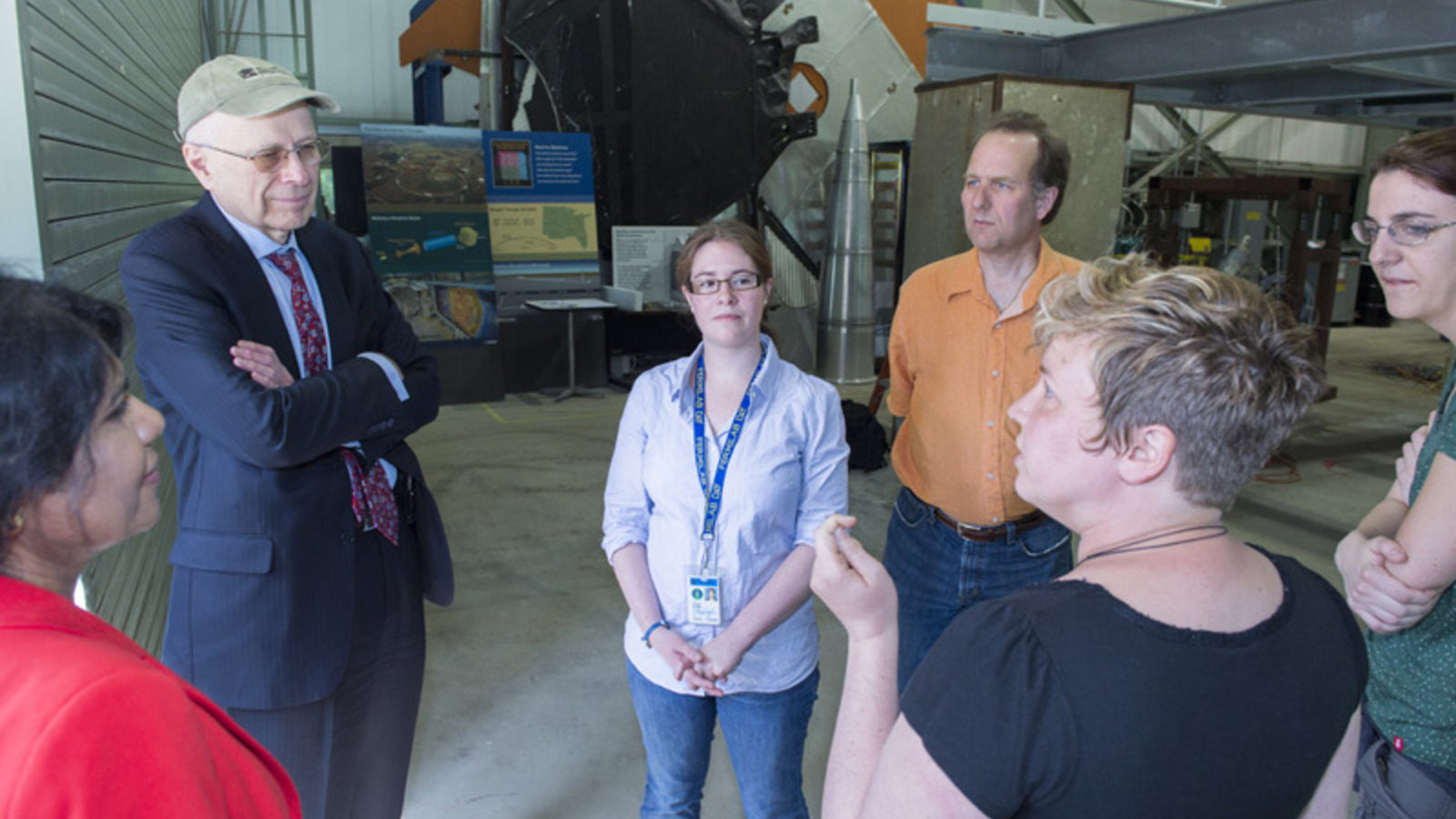William Colglazier, science and technology adviser to the US Secretary of State, gave a colloquium at Fermi National Accelerator Laboratory on May 21. In this Q&A with the editor of Fermilab Today, he offers his views of science, diplomacy and how one can serve the other in improving our world.
Q: How does science fit into the State Department?
A: Science diplomacy is really important to the State Department. “Science diplomacy” is kind of the term we use for how science can be helpful to diplomacy, using science as a tool to advance diplomatic goals, but it’s also diplomacy advancing the scientific enterprise.
Many international collaborations have to have agreements with other countries, and the State Department is the key in helping negotiate that.
It’s also involved in advancing US science by helping overcome problems such as visa issues and other things where collaboration can be hindered by policies of governments. It may be that scientists want to have access to some unique research environment that doesn’t exist in the United States, for example in ecological areas. Diplomacy can be very useful in helping advance scientific goals.
There are a lot of people in the State Department that have scientific backgrounds. Being there for three years, I’ve learned that science is even more of an asset to diplomacy than I appreciated, and I was sympathetic to begin with. Other countries do want to engage with our government agencies, but often even more so with our universities, our national laboratories and our companies.
Q: How can science be used as a diplomatic tool?
A: In countries where the US does not have diplomatic relations—Iran, Cuba—the State Department is very supportive of using mutually beneficial scientific cooperation to keep a channel of communication open.
With the encouragement of the State Department, the US National Academy of Sciences has been engaging in several workshops a year with the Iranian scientific community. And many of the Iranian delegations come under a great program with the State Department called International Visitor Leadership Program. So the State Department has actually provided some of the financial support to enable Iranian scientific delegations to meet in the US with the US National Academy of Sciences.
Every country realizes—the light bulb has gone on—if they’re going to have a chance at a stable, secure, prosperous future for their people, they’re going to have to upgrade their capabilities in science and technology. They’re willing to look at their investments and their policies and their regulations.
Q: What about fundamental research?
A: All the technological advances that we’re living with in this century came from basic fundamental research in the last century—solid state physics, nuclear physics, biological sciences, the genome. The crown jewel, in my view, is ensuring that we have significant resources going in basic, fundamental research.
To stimulate innovation, a lot of countries focus solely on the applied research, on things that are very close to the marketplace. How do we get them over that hump? They’re neglecting or not putting sufficient resources into the fundamental research, which might not only lead to things that are unanticipated, but also it’s how you train the next generation.
A version of this article was originally published in Fermilab Today.



